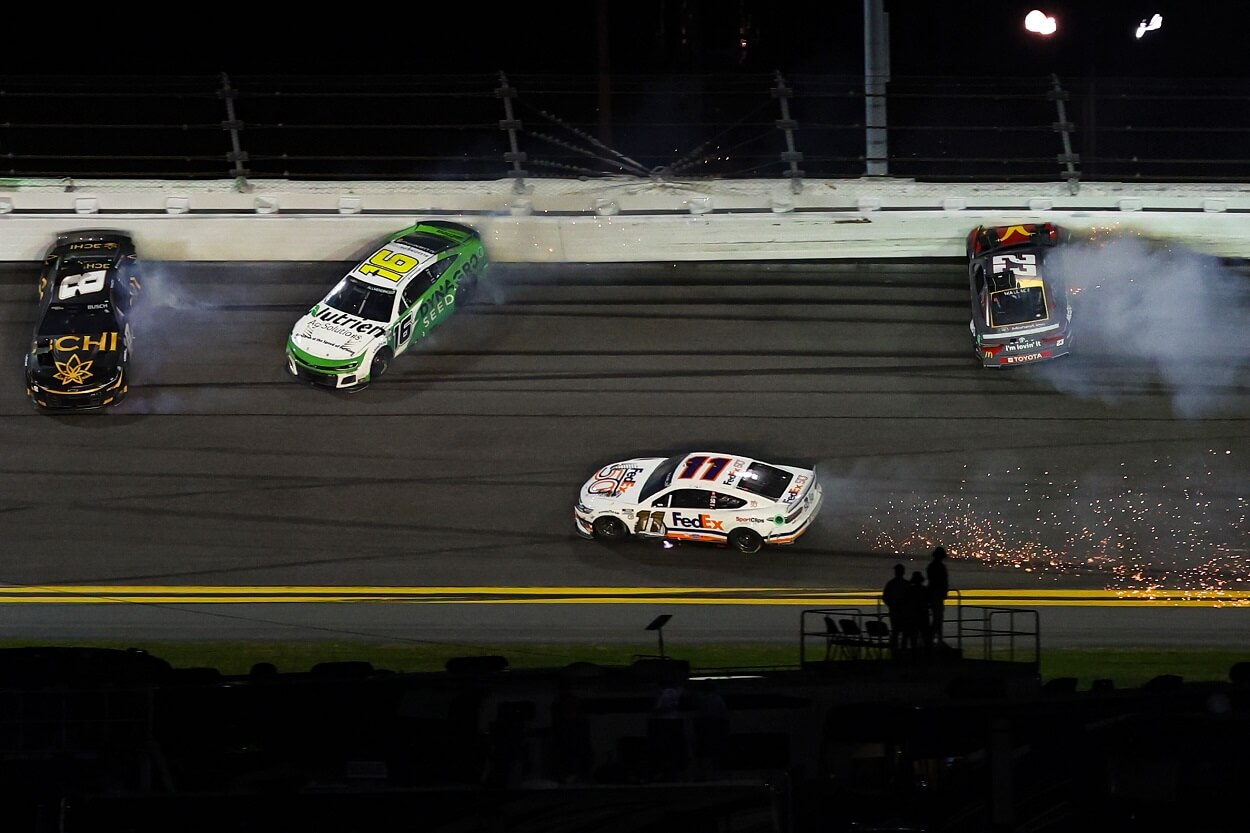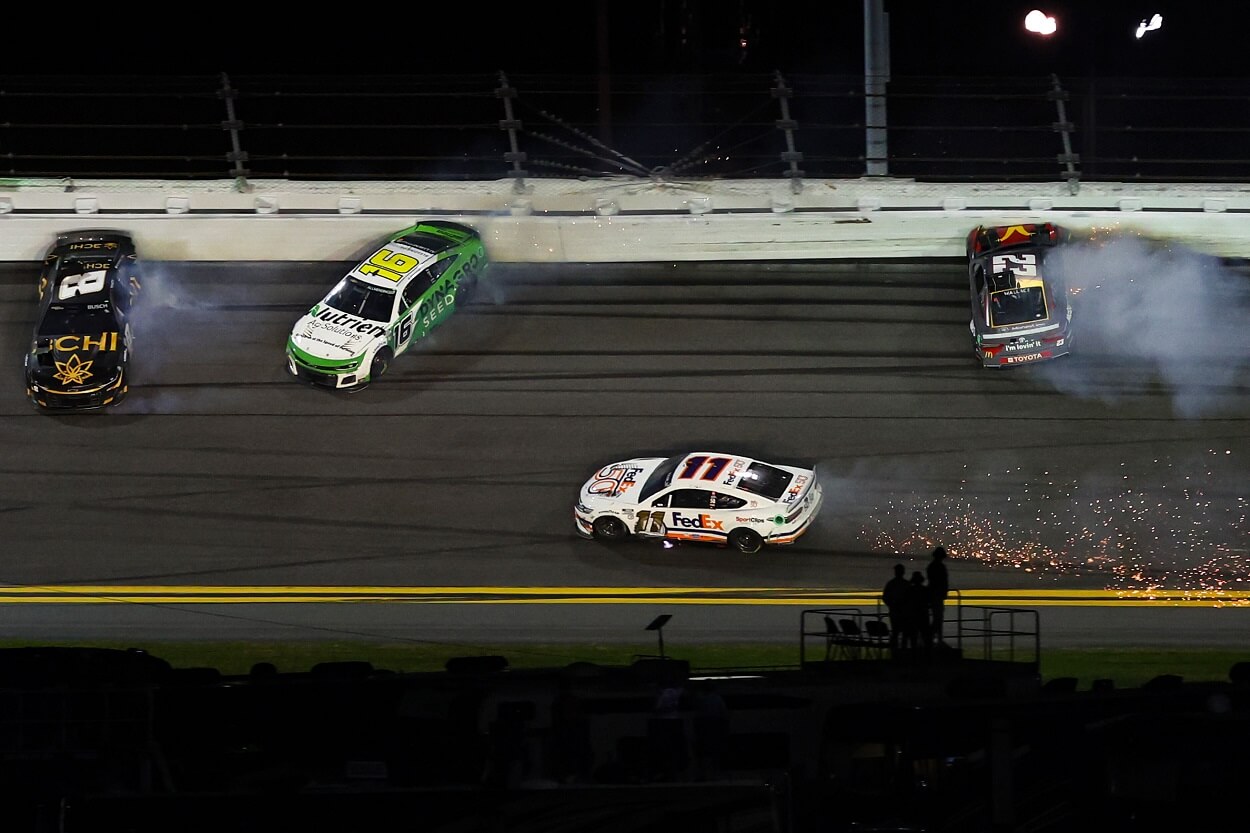NASCAR
Late-Race Misfortune Left NASCAR Fans Without Any Real Finishes at Daytona

The three NASCAR national series races during Speedweeks were filled with the traditional close, intense racing associated with races at Daytona International Speedway. Still, none of them had the ultimate payoff of a race to the actual finish line.
Rain plagued the season opener for the newly rechristened Craftsman Truck Series race throughout the event Friday night. The race began with only two laps of green-flag action before a light rain necessitated the first yellow flag of the event. Officials allowed the race to restart on Lap 7, but the trucks circled the 2.5-mile track only once before the rain picked up again and caused the second caution of the night.
The trucks eventually got through 68 of the 100 scheduled laps before another rain shower forced officials to halt the race with a red flag. NASCAR dried the track and attempted to restart the race, but the rain returned before the race ever returned to green-flag conditions. Zane Smith became the winner of the event after not driving a full lap at speed for more than an hour.
After a rainy Truck Series race, the Xfinity and Cup races ended due to wrecks

Both the Xfinity Series and Cup Series races the next two days at least made it to their advertised distance, more so even, but neither raced to the finish line.
The Xfinity Series race needed five extra laps and two overtime restarts to get to a finish, even if the result was less satisfying than seeing the drivers compete all the way to the checkered flag.
Austin Hill clearly had one of the most dominant cars in the field. He won the pole award but had to start at the back of the field because a radio problem forced him to pit road during the pace laps. He then drove through the field quickly, won the first stage, and spent more than 90% of the race inside the top 15.
All that mattered in the end, though, was where he was positioned as Sam Mayer flipped down the backstretch on the white flag lap of the second overtime. NASCAR overtime rules dictate that a race must end if a caution happens after the white flag is displayed to indicate the final lap of the race.
So, Hill, Justin Allgaier, and John Hunter Nemechek all parked their cars on the frontstretch near the entrance to pit road as they awaited NASCAR’s final decision. Video reviews showed that Hill was ahead when the caution lights came on. NASCAR declared him the winner, but the intensity of the moment had already dissipated while officials reviewed the situation.
Ricky Stenhouse Jr. then won the Daytona 500 on Sunday much the same way. He by no means dominated the event with only 10 laps led, but he did happen to be out front when the caution lights came on in double overtime for a nine-car pileup in Turn 1.
Stenhouse cruised around the rest of the track to cross under the checkered flag, but the drama of the moment had again already come and gone. Everything after the wreck was a formality.
Overtime rules have varied since NASCAR first introduced them
NASCAR has tried to get away from races that end under caution with rule changes across the last two decades, but these situations are challenging to legislate away.
Races routinely ended under caution until 2004, when NASCAR instituted its original green-white-checkered rule that allowed races to extend past their advertised distance. NASCAR has massaged the overtime rules in the years since, and they now allow unlimited restart attempts, so long as the caution comes out before the leader takes the white flag to begin the final lap.
The white-flag requirement does not typically come into play at most tracks, but the combination of pack racing at tracks that are 2.5 miles long or longer allows a lot of space for incidents to happen before the field can circle the track cleanly twice, especially with the intensity that inevitably ramps up as a race reaches its conclusion.
Five of the last nine Cup Series races at Daytona have ended under caution despite the overtime rules, and four of the last seven Xfinity Series races, including each of the last three.
The issue does not have an easy fix, however. NASCAR attempted to use a tweaked overtime setup in last year’s All-Star Race at Texas Motor Speedway when they eliminated the white-flag element and allowed the race to restart as long as a caution came out at any point before the checkered flag.
That experiment did not go well, as it almost cost Ryan Blaney a deserving win when the caution came out moments before he crossed the finish line. Thankfully, Blaney held on to win the overtime restart, but the entire ordeal proved that was not the correct solution.
No other obvious answers exist in the current framework, but the sanctioning body should continue to explore ways to get more of its superspeedway races to end with a checkered flag rather than a yellow one.











